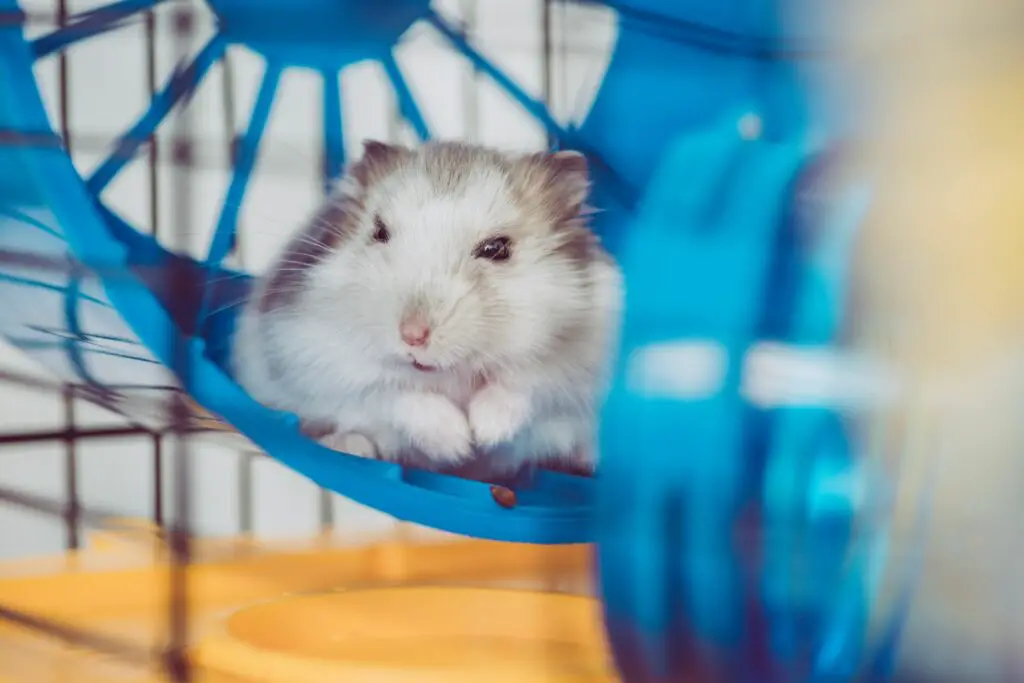Hamsters are adorable and fascinating pets that can bring so much joy and entertainment to our lives. But sometimes, they exhibit behaviors that can be confusing or even alarming to their owners.
One such behavior is bruxing. In this blog post, we will explore what bruxing is, why hamsters do it, and how to support your hamster’s bruxing habit.

What is Bruxing? Exploring the Basics
Bruxing is a common behavior in hamsters that involves grinding their teeth. While this may sound simple, it is actually a complex behavior that can convey a lot of information about a hamster’s health and emotional well-being.
The Definition of Hamster Bruxing
Bruxing is the grinding and gnashing of teeth that hamsters do. It is a rhythmic movement of the jaw and teeth that produces a distinct sound. This sound can range from a soft purring to a loud and continuous grinding.
The Science Behind Bruxing
Hamsters have long incisors that grow continuously throughout their lives. Bruxing helps to wear down their teeth and keep them at a healthy length. Additionally, bruxing can help to relieve stress and anxiety in hamsters.
When Bruxing Might Indicate Illness
While bruxing is a normal behavior in hamsters, there are some situations where it might signal an underlying health issue. For example, if your hamster is bruxing excessively, it could be a sign of dental problems, such as overgrown teeth or an abscess. It could also be a sign of pain or discomfort in other parts of the body.
How to Differentiate Bruxing from Other Hamster Behaviors
It is important to differentiate bruxing from other hamster behaviors to understand what your hamster is trying to communicate. For example, hamsters may also make similar sounds when they are chewing, grooming, or even sleeping. However, bruxing sounds are usually more rhythmic and louder than other sounds.
Why Do Hamsters Brux and What Does It Mean?
Hamsters brux for several reasons, including:
- Teeth maintenance: As mentioned earlier, bruxing helps to wear down their teeth.
- Stress relief: Bruxing can help to relieve stress and anxiety in hamsters.
- Communication: Hamsters can use bruxing to communicate with other hamsters or even their owners.
What Hamsters Communicate Through Bruxing Sound
Hamsters can communicate different emotions and intentions through the sound of their bruxing. For example, a loud and continuous bruxing sound may indicate anger or frustration, while a soft and steady bruxing sound may indicate contentment or relaxation.
How Different Breeds Brux Differently
Different hamster breeds may brux in slightly different ways. For example, Syrian hamsters may produce a louder and more continuous bruxing sound than dwarf hamsters.
However, the basic behavior and purpose of bruxing remain the same across all breeds.
The Impact Bruxing has on Hamsters
Bruxing can help to relieve stress and anxiety in hamsters. It releases endorphins, which are natural painkillers and mood enhancers. Additionally, the rhythmic movement of the jaw and teeth can be soothing for hamsters.
The Best Ways to Support Your Hamster’s Bruxing Habit
The Right Hamster Toys to Encourage Bruxing
Providing your hamster with appropriate chew toys can help to encourage healthy bruxing behavior. Wooden chew toys, cardboard tubes, and mineral blocks are all great options. However, it is important to avoid giving your hamster toys with sharp edges or materials that could be harmful if ingested.
The Relationship Between Hamster Bruxing and Diet
A healthy diet is essential for maintaining healthy teeth and supporting bruxing behavior. Providing your hamster with a balanced diet that includes plenty of hay, fresh vegetables, and high-quality pellets can help to keep their teeth in good shape.
When to Worry: Identifying Problems with Hamster Bruxing
Signs That Your Hamster Bruxing Might be a Cause for Concern
Excessive bruxing or changes in your hamster’s bruxing behavior could be a sign of an underlying health issue. Other signs to look out for include drooling, loss of appetite, and lethargy.
How to Identify and Treat Dental Problems in Hamsters
If you suspect that your hamster is experiencing dental problems, it is important to take them to the vet right away. Treatment may include trimming overgrown teeth, antibiotics for infections, or surgery for more serious issues.
What to Do If Your Hamster Stops Bruxing
If your hamster stops bruxing, it could be a sign of pain or discomfort. It is important to monitor your hamster’s behavior and take them to the vet if you notice any changes in their behavior or appetite.
Wrapping up
In conclusion, bruxing is a normal and necessary behavior in hamsters that can convey a lot of information about their health and emotional well-being.
By understanding and supporting your hamster’s bruxing habit, you can help to ensure that they are happy and healthy pets.
Remember to provide appropriate chew toys, create a hamster-friendly environment, and monitor your hamster’s behavior for any signs of dental issues or other health concerns.
- How Long Do American Eskimo Dogs Live? Important Factors and Care Tips - September 29, 2023
- Do American Bulldogs Need Grooming? Essential Tips and Care Guidelines - September 29, 2023
- Do Bengal Cats Enjoy Playing? Essential Tips for Keeping Them Active - September 29, 2023